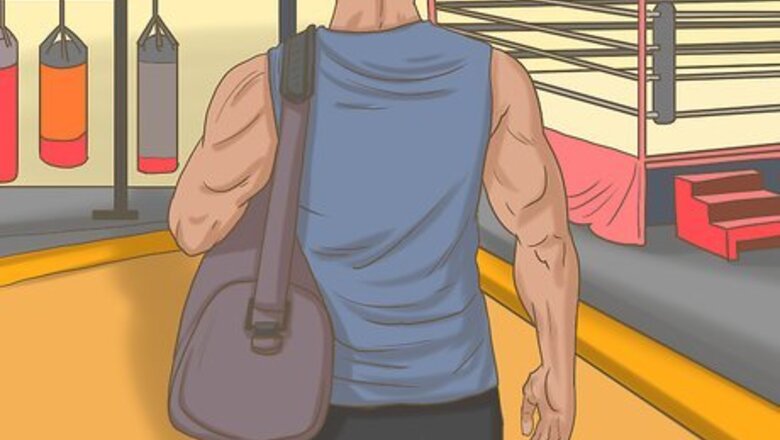
views
Picking the Right Gym
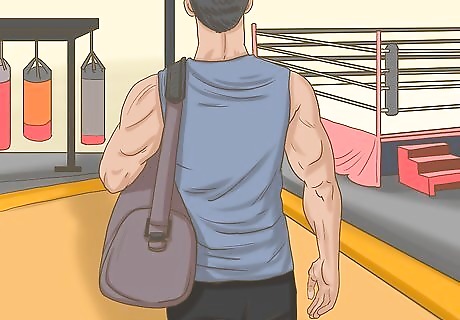
Choose a gym where you and the team have great chemistry. Joining a good MMA team is one of the most important things any fighter can do. If you do not have good training partners and a good coach, then you won't get very far in this sport. Find a coach and team that have produced the results you are looking for in your own training and stick with them. When looking for the right gym, you need to meet people that train there. Watch a practice and learn whether or not you gel. Sit with coaches, talk about the goals you have as a fighter, and learn whether or not the gym is the place you want to call your home.
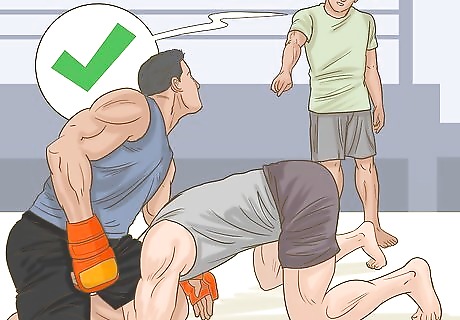
Find a gym that speaks to your weaknesses. The strength of a gym has an inverse relationship to deficiencies you have as a fighter. Unless you’re training at a gym that offers you the opportunity to address weaknesses and round yourself out as a better fighter. For example, if you’re from a Muay Thai background, you might want to train somewhere that helps you with wrestling to make you a better MMA fighter all around. Becoming as varied as possible in your skill set as a fighter will help you become the best. A gym that teaches you a combination of boxing and jiu jitsu is a great starting point. Assess the size of the guys that train at the gym you’re looking into. If you look at them and feel you need bigger guys to fight, choose a gym that addresses that need. Fighting bigger guys is crucial to giving you the best idea of what it’ll be like to fight someone in a cage match.
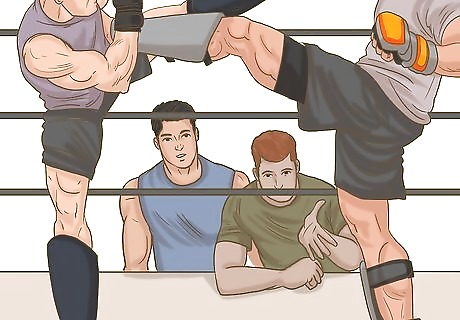
Evaluate the gym’s attitude toward sparring. Make sure that there is a line between training and hurting yourself and/or others. Be sure that the coach keeps an eye on how everyone is relating to everyone else. The environment should facilitate one where everyone is going 110% at any given time during sparring opportunities. The environment should also be one where everyone cares about each other so that no one is ever seriously hurt. Training is preparation, not actual MMA fighting matches. Don't start sparring too early. Make sure to develop good fundamentals first. Work with a good coach, and they will let you know when you are ready to spar.

Move to an area with a high concentration of gyms. If you want to become a MMA champion, but you don't live near excellent gyms, you might have to sacrifice being close to home. If it means being an area where gyms are of a high level of quantity and quality, then move. If you live in a place with just one martial arts gym, wrestling, Jiu Jitsu, kickboxing, and so on will need to be housed by that one gym. If the gym doesn't offer the training you need to become a champion, consider moving. If you relocate a to bigger city like Las Vegas or Los Angeles, you'll likely have access to ten quality gyms within a five mile radius. You can go to different gyms to practice different disciplines.
Learning the Basics to MMA fighting
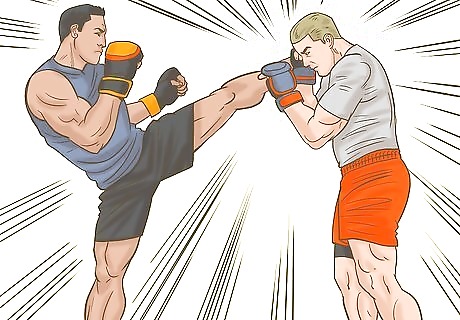
Have stand-up fighting knowledge. Stand-up fighting consists primarily of kneeing, elbowing, punching, and kicking. Train to develop footwork so that you can dodge opponent’s attacks more easily in the cage. You will train in a variety of disciplines: karate, Kung-Fu, Kendo, Muay Thai, and of course, boxing. To learn the fundamental actions most amateur fighters will need, consider gaining an extensive knowledge of kickboxing. It is the most effective way to develop stand-up fighting.
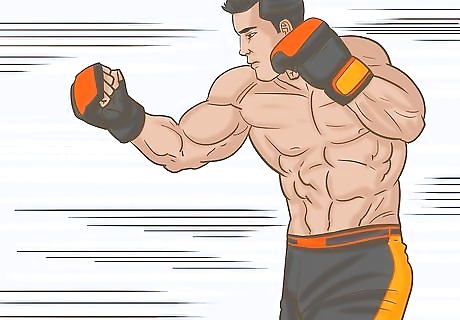
Practice basic fighting techniques. Get into a fighting stance. Use one arm to protect your face. Keep the other arm lower to protect your body. On the same side of your body as your lead foot, make a jab with that arm by doing a straight punch. With your rear hand, make a cross punch by punching straight into the air. Throw a punch in a circular motion with your lead hand to make a hook shoot. For an uppercut, punch upward with your fist pointed up.
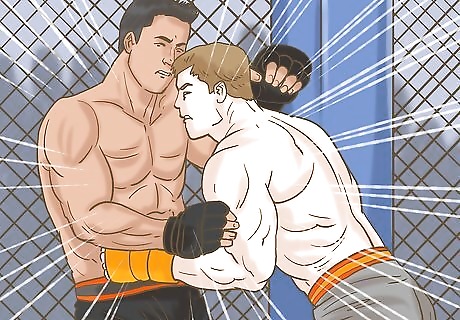
Reduce the success of your opponent’s attacks. This can be done by learning the MMA fighter basics of clinch fighting. Train for the clinch takedown by becoming well-versed in sambo, judo, and wrestling techniques. Learn how to wrestle in order to gain an effective understanding of how to do clinch fighting. Initiate a clinch while you’re standing up or while you’re on the ground. Get close to your opponent and tie him or her up by locking arms with them. Take down your opponent by using a throw or a takedown.

Learn to submit your opponent. Ground game is another integral part of MMA fighting basics. Ground game is where submissions from your opponent take place. Ground game consists of jiu jitsu, sambo, judo, and shoot and catch wrestling. Knowing how to defend yourself against submission is crucial to winning fights, especially in MMA. Most MMA fighters train in the Brazilian art of jiu jitsu, so be prepared and train well to be able to defend yourself against their submissions, as well as learning to create your own submissions during fights. Submit your opponent into a mounted position by getting on top of him or her for optimal control. Mount positions can also be successful from the back and side.
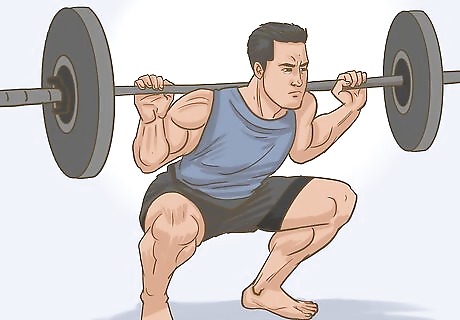
Train for strength and fitness alongside your MMA training. For continued fighting power, lift weights for strength and perform fitness drills for endurance. Solid fitness training will ensure that you are able to maintain stamina during a fight. For example, you can have MMA training with a coach three times a week and aerobic training (running, cycling or swimming) twice a week. Start your pre-fight training regimen months before a fight. Training needs to be challenge you every way humanly possible to ensure that you’re prepped for anything. Lift weights to maximize your strength. Build endurance for fighting power by doing various fitness drills.
Training for Strength and Endurance
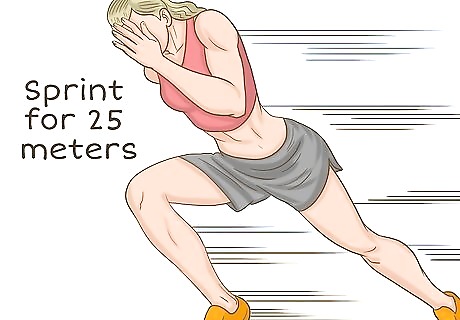
Warm up before you start your workout. Raise your heart rate by beginning your routine by sprinting. Sprint for 25 meters (82 ft), walk back to where you started, and then repeat the sprint again for at least five more minutes.
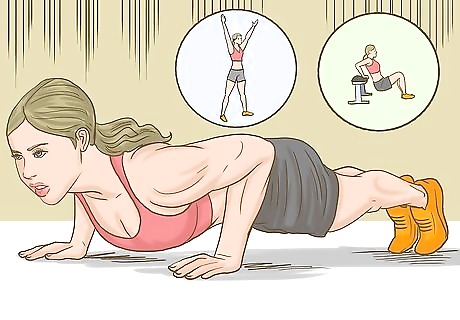
Challenge your upper body muscle endurance and strength. Do 15 pushups, 15 jumping jacks, and 15 bench dips. Repeat this routine for a full 5 minutes and then rest for 90 seconds before going to the next step. Perform workouts at least 3 times a week with a day of rest in between. Be sure to record how long it takes you to perform each station of exercises to see how you can improve your time with practice.

Focus on increasing your body’s capacity to perform. This will help your body build a resistance to fatigue while enduring extreme levels of exertion. Start with 10 heavy bag burpees. Lighten things up by performing a burpee clean and press with 25 lb dumbbells 10 times. Follow up with doing 10 burpees with 15 lb dumbbells. Decrease the amount of weights even further by performing the last set of burpees in the station just using your bodyweight. Perform 10 burpees. Repeat this circuit station for a full five minutes following the end of the workout. Then proceed to the next step.

Condition the entire body with a conditioning circuit. Keep the heart elevated while you perform high-intensity conditioning. Perform this circuit and then repeat it for a full five minutes like you did the others before moving to the next step. Kick your legs up into high gear with a set of fast high knees. Do this 10 times. Perform a set of mountain climbers. Perform the action 10 times. Do a set of jumping jacks, plank jacks, and split lungs. Each set needs to be done 10 times to be considered a full circuit.
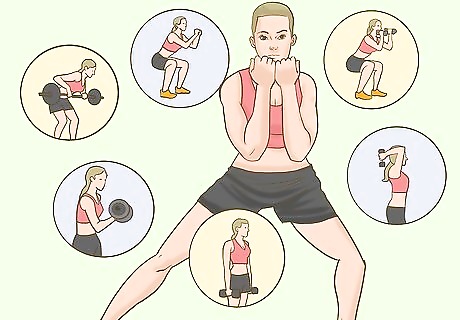
Target aerobic and anaerobic activities. Build power and strength while continuously building endurance. Incorporate full body weighted resistance to do so. Complete this circuit by doing 10 squats, 10 squats with overhead presses, 10 tricep presses, shoulder circles 10 times in each direction, 10 bicep curls, and 10 bent over rows. After completion, repeat the station for an additional full five minutes.
Staying On Top of Your MMA Fighting Game

Get motivated and stay motivated. Think of all the MMA greats. Men like Randy Couture, Matt Hughes, Dan Hardy, and Georges St. Pierre. What do they all have in common? Be consistent with how you train and keep your eye on the prize with your goals to be the best. Have tunnel vision when it comes to others and their progress. By comparing yourself to someone else, you are imposing limits on you. Focus on not having limits at all. Strive for excellence. Focus on your development and growth as an MMA fighter. Search there for your drive to succeed. Set goals to challenge yourself. Evaluate your progress regularly and then make new goals.

Gain ring experience so that you can fight at your full potential. You can practice and train all day every day, but there’s nothing like real ring experience. When you are ready, go ahead and step into the ring, and let the experience teach you.
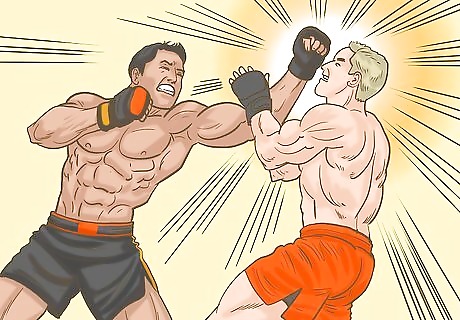
Be remarkable and stand out amongst the rest. Consider the fighters promoters love to promote. Identify and study what makes fans prefer one fighter over the next. If you become the one that everyone is talking about, then you will have an easier time getting that shot at the title. Always try to finish your opponent when you’re in the cage. Exciting knockouts and submissions are a lot more fun to watch than decisions. Show your personality. If you have a great, memorable personality then you will get a lot more exposure.
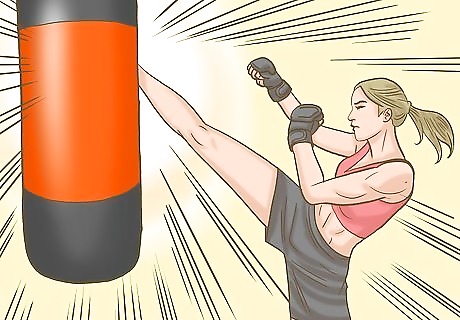
Take opportunities to practice technique(s). Whenever you are training, never miss an opportunity to practice techniques you are taught from different disciplines. No matter where you are or what you're doing, the motions of martial arts can be utilized. Take these opportunities to perfect your techniques. For example, if you are doing bag drills, don't just swing like a maniac. Use your techniques, like different kickboxing, MMA moves. If you can keep good form when your arms are ready to drop off, then you have a much better chance of performing at the top of your game when you're in the cage.
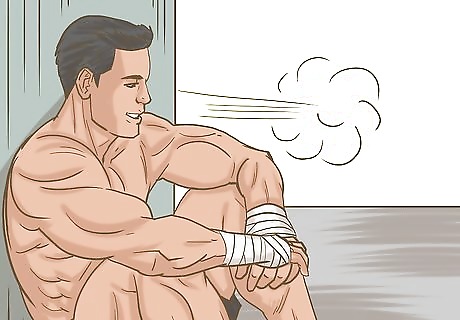
Refrain from going overboard with training and fighting. Your body will need time to rest and recover. If you choose to push yourself beyond that point, then it will adversely affect your performance. Learn to recognize this point and when you get to it, give your body the recovery time it needs. Signs and symptoms that you might have overtrained in the past include being sick before competition, training injuries, underperformance, and/or delayed peaking. Signs and symptoms that you might be overtraining in the present include having an increased heartrate, having an increased heartrate for a given training intensity, having an increased time for heartrate to recover between intervals, and/or apathy or lack of enthusiasm for training.



















Comments
0 comment